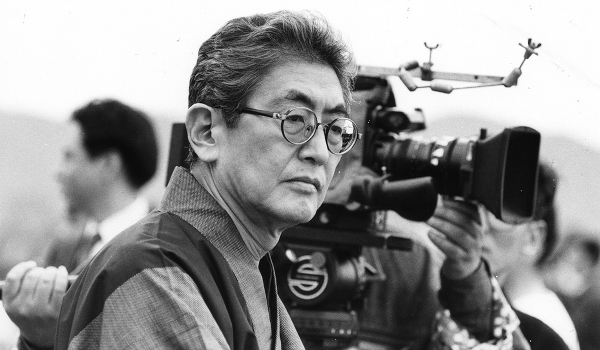Oshima: An Introduction
Nagisa Oshima was a man of many different states of being that only knew how to sort out the contradictory elements of society and the unbridled idealism of youthful naiveté through his art. Using cinema to explore societal elements in post-modern Japan, he managed to assume the roles of provocateur, humanist, activist, and mediator of the counter-culture youth and pre-modern nationalists. He created thoughtful and subversive films that explored the depths of the human condition while touching on contemporary concerns in a Japan that was desperately searching for an identity amidst rebuilding and the undeniable and unstoppable influence of the West. His characters were often hopeless contradictions that tried to insulate themselves from the outside world through raging passion in youthful defiance of societal norms.
It is through the reactionary response of the radical youth to the older architects of the status quo that something wholly unique and unwittingly contradictory is formed. In acting in rebellious defiance against a set of cultural conditions that the radical youth movements found to be unjust, the young have essentially created a cultural vacuum while insulating themselves from their own national identity. It is through this vacuum that Western influences are pulled in, creating a unique amalgam of societal elements that were seemingly diametrically opposed. One is given the distinct impression that pre-modern and post-modern Japan lived in a constant state of disharmony, and peaceful coexistence was a delicate balancing act that would fall to pieces if pushed too far to either side of the scale.
These are the conditions that shaped Oshima and his unique artistic vision. It is his personal exploration of this balance that set his work apart. The earnestness of his personal exploration gives an uncynical integrity to his work. His films could only grow and flourish in the societal conditions that Oshima was rebelling against. He didn’t fall victim to the reactionary tendencies of idealism and youth, and a careful and thoughtful set of internal philosophies shaped his work. It is a combination of his zeal for introspective interpretation of the societal conditions of the time, his lack of dismissive cynicism for the vantage points of both sides, and his careful thoughtfulness that shaped his oeuvre in to something wholly unique. He allowed age, changes in perspective, and the evolution of the ever-shifting societal conditions to shape his films over the years. He didn’t hold on to outmoded philosophies just to give some semblance of uniformity to his body of work, but allowed his own perspective to shift. It is the artist that allows these natural shifts to occur and the fearlessness to adjust their work accordingly that can always stay fresh and remain true to their inner vision, even if that vision takes a few detours along the way.











 Review: Outrage (2010)
Review: Outrage (2010) Subversive Saturdays: Unglassed Windows Cast a Terrible Reflection
Subversive Saturdays: Unglassed Windows Cast a Terrible Reflection Review: Hugo (2011)
Review: Hugo (2011) Review: The Muppets (2011)
Review: The Muppets (2011) Review: The Muppets (2011)
Review: The Muppets (2011)





